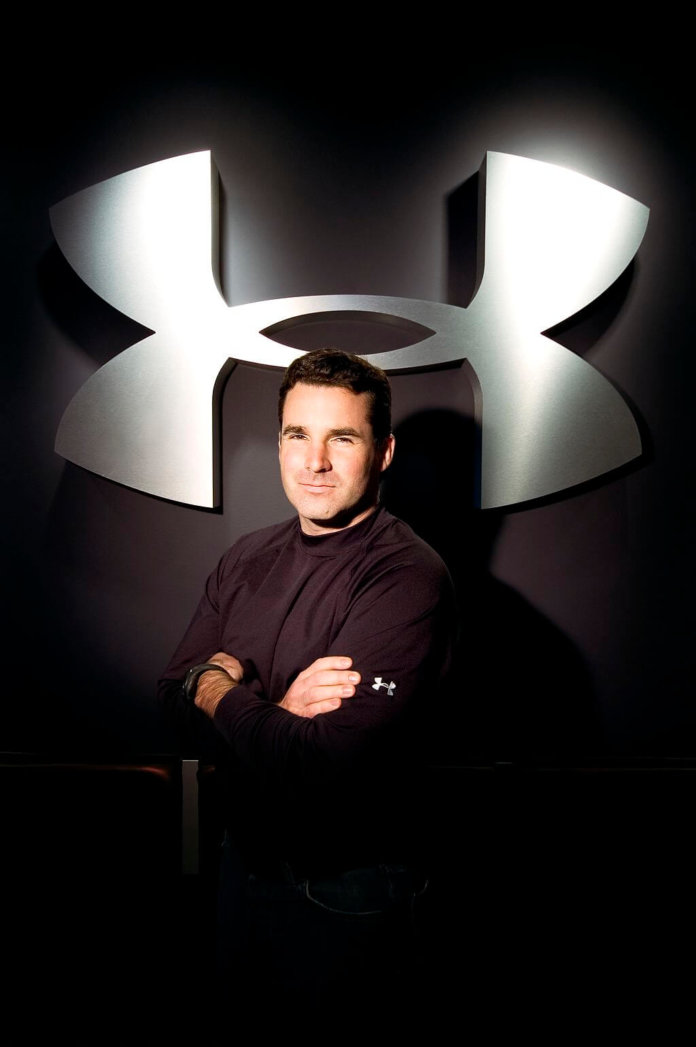
A good idea and hustle may be enough to get an entrepreneurial idea off the ground, but it’s probably not enough to eat into the market share of existing behemoths. For that, you need capital and a team of sales and marketing experts who can execute a carefully executed growth strategy. On this you will find unanimous consent.
Well… nearly unanimous.
If you look at the journey Under Armour founder and CEO Kevin Plank took in building his company into the second largest sports apparel company in the world, you would see he did it with little more than a product and a lot of hustle.
Early Passion For Sports
Kevin Plank grew up in the Washington, D.C. suburb of Kensington, Maryland, the youngest of five brothers. Like the rest of his brothers, Kevin had a passion for sports, his favorite being football. After playing on the team at Fork Union Military Academy which featured future Heisman Trophy winner Eddie George, Plank tried out for the football squad at the University of Maryland. Plank was by no means the standout on any of his previous teams but he knew he had one attribute the coaching staff might take note of.
“Kevin was 5-10, 220 pounds, not superfast, not superstrong. He really didn’t fit the profile of what we were looking for,” Dwight Galt, the Terrapins’ strength coach recounted in a 2003 article. “But he kind of willed his way onto the field. We had no choice but to put him out there.”
The Eureka Moment
That sheer will to succeed would serve him well when he had the idea for a better undershirt for football players. Having been continually frustrated by the way his cotton shirts would soak up and hold his sweat during practices and games, Plank was determined to find a better material that would keep the sweat away from the body.
After an extensive trial and error process, Plank believed he had found a fabric blend that would do as he hoped. Without any money for R&D, he leaned on his network of football playing friends to test out his new shirts.
“When Kevin’s got an idea, he’ll get as many people as he knows together to help him out,” said Craig Fitzgerald, Plank’s college roommate and teammate in an interview with bizjournals.com in 2003. “To Kevin, that’s how a plan works.”
Making It To The Big Leagues
After a few years, many of Plank’s collegiate contacts had made it to the NFL. Using the only marketing tactic in his arsenal, Plank set out to get professional football players to wear his product.
“It was all about making yourself bigger than you were,” Plank says. “My first goal was getting athletes to believe in the fact that they needed an alternative to a basic cotton T-shirt. The way you do that is with a great product, but you also do it with influencers,” he said in a 2009 Sports Illustrated story.
Jim Druckenmiller was the backup quarterback for the San Francisco 49ers and, as a good friend of Plank’s, was one of his earliest proponents to his teammates in the locker room. Soon Plank would send boxes of shirts to other friends on different NFL teams and asked them to hand them out as well. This unusual marketing practice resulted in a phone call that would forever change his life.
“I’m sitting in grandma’s basement in Georgetown, and the phone rings,” Plank told Sports Illustrated. “The guy says, ‘I’m the head equipment manager for the Atlanta Falcons and we want to buy your shirts.’ Then the Falcons played the Giants. There, the equipment guy for the Falcons was a mentor to the equipment guy at the Giants and he liked our stuff.”
We Must Protect This House
From there, Under Armour nailed down supply contacts with major college football programs, with Georgia Tech being the first. When it came time to produce their first major TV spot in 2003, Plank didn’t go with established All-Stars. Instead, he went back to friends from college. That led to the spot where a football team huddles with Plank’s former University of Maryland teammate Eric Ogbogu, shouting “We must protect this house.”
That line wasn’t designed to be the company’s slogan but its popularity has made it Under Armour’s official tagline.
Under Armour Today
Today, Under Armour is a nearly $4 billion giant which is second only to Nike in the sports apparel market. Under Plank’s leadership, the company continues to grow and explore new territory. In 2016, they waded into the waters of fitness tech and a year later, they got New England Patriots star quarterback to be their spokesperson for sleep apparel. According to Under Armour, the product, “helps your body recover faster, promotes better sleep, reduces inflammation, and regulates cell metabolism.”
One area where the company has struggled is in making breakthroughs in women’s apparel. The testosterone-driven approach that has been so successful with men has not translated to success with women. Under Amour is lagging behind brands like Lululemon in that demographic.
Still, it is sometimes difficult to believe how far Kevin Planks has come with what started out as a good idea and a whole lot of determination.









